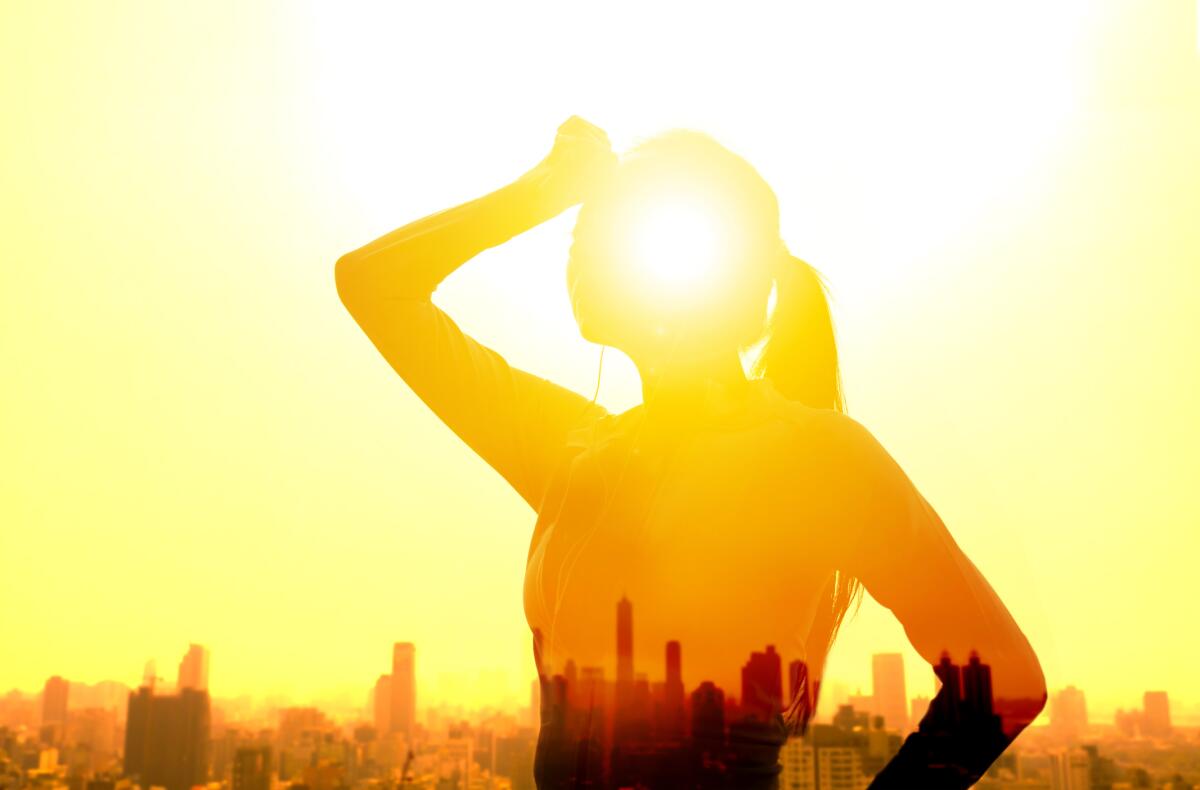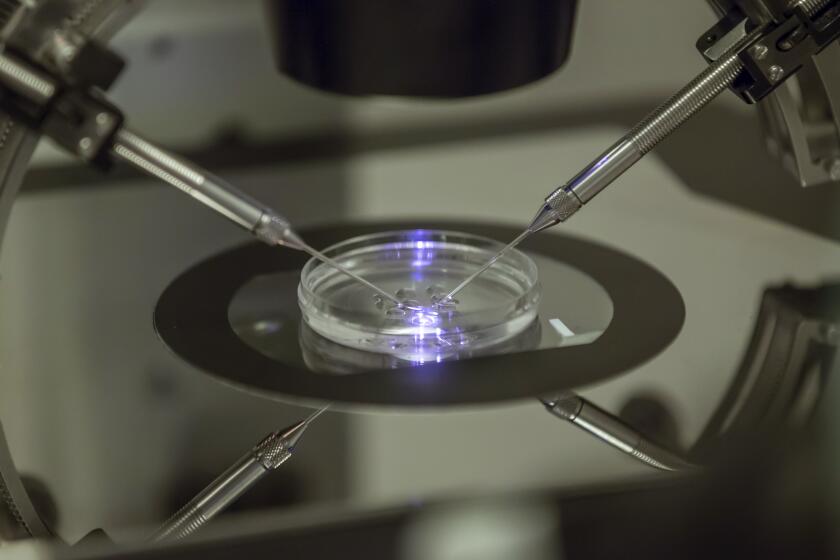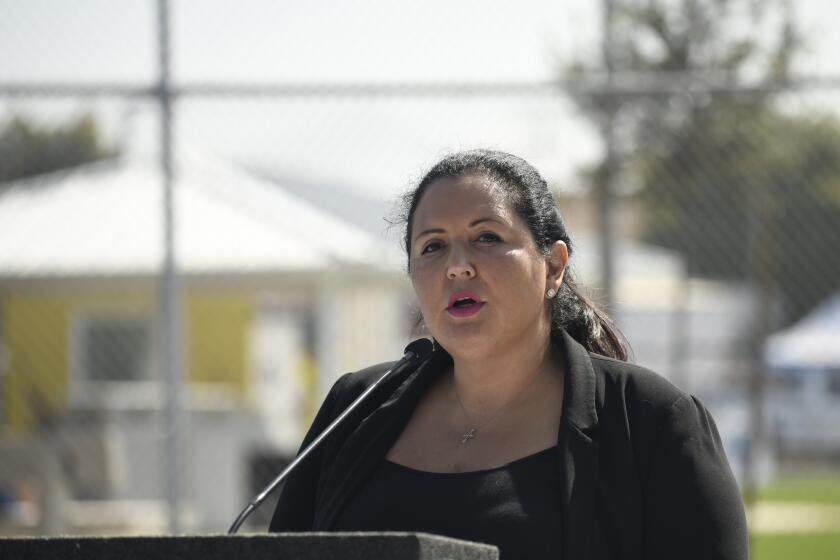Opinion: As doctors, we see what happens to the health of our communities during heat waves

Our medical journals are filled with articles highlighting the plethora of heat-associated health risks.
Hampshire, M.D., is a family physician at Sharp, serves on the Public Health Advisory Council of Climate Action Campaign and lives in Del Mar. Castellanos, M.D., is a cardiologist and professor of medicine at UCSD School of Medicine and lives in San Diego. Lindegren, M.D., is a pediatrician, serves on the American Academy of Pediatrics California Chapter 3 Climate Change and Health Committee and lives in San Diego.
This was an atypically cool winter in San Diego. The water pouring from the sky stunted our seemingly endless drought, simultaneously nourishing our soil and our souls. The snowcapped mountains viewed from the coastal hills were magnificent. Many relished the delight of this winter wonderland. It wasn’t too long ago that we were battling wildfires instead in January.
Summer is now upon us, and the heat is on. The World Meteorological Organization is predicting record high temperatures, superimposed on a warming planet up about 2 degrees Fahrenheit from where it was just 150 years ago. Two mere degrees might not seem alarming, but for a person, 2 degrees up from a standard core temperature constitutes a fever. Our bodies don’t function well when we have a fever, and we certainly don’t feel well.
The medical community is on the front lines managing the health consequences of climate change. We see what happens to the health of our patients during heat waves, increasing in both intensity and frequency. Our medical journals are filled with articles highlighting the plethora of heat-associated health risks: increased heart attacks, strokes, congestive heart failure, kidney failure, kidney stones, multiple sclerosis flares, preterm birth, mental health deterioration, to name just a few.
In 2021, during an unprecedented heatwave in the Pacific Northwest, thousands flooded emergency rooms and hundreds died.
Here in San Diego, we see increased emergency room visits during heat waves, we see our elderly patients hospitalized after outdoor gardening on a hot summer day, and we see our pregnant patients go into preterm labor during extreme heat. The latter phenomenon was highlighted in a 2020 UC San Diego study. These preterm babies often suffer a lifetime of health consequences. We had a well-publicized surge last fall at San Diego State University’s Snapdragon Stadium debut game when emergency crews provided medical aid, and about 200 fans were treated for heat-related illness while 20 were sent to the hospital. The ability of health care organizations to meet surges in demand is a very real concern as we continue to struggle with staffing shortages and burnout, exacerbated by the pandemic.
As a result of this front line role, thousands of doctors, nurses and health care workers locally, nationally and internationally are engaging in advocacy and action surrounding the intersection between climate change and health.
In San Diego, physicians work collaboratively while also working within our medical groups to increase awareness, support sustainability and educate our patients. We have formed climate health committees within our respective organizations and many serve on Climate Action Campaign’s Public Health Advisory Council to encourage our elected officials to enact policies which protect us all.
The County of San Diego County Health and Human Service Agency has developed heat response plans to protect the public. These plans include support for those without air conditioning: distribution of free fans and designated cool zones paired with transportation if needed. We are looking to build on the commitment of the county’s Public Health Director Dr. Wilma Wooten and San Diego County public health officials prioritizing climate change and health-related education, communication and preparedness.
A product of this collaborative action is an exciting first, San Diego’s Heat and Human Health Summit, scheduled Aug. 12. The purpose of the summit is for major health care organizations to come together with health care administrators and public health officials. We have no control over the temperature, but we can work to educate our community, building climate resilience while also preparing our systems for potential impact. We learned through the pandemic that there is much we can do to meet the needs of our patients with proper planning. We can borrow from the work of our national partners, utilizing climate resilience toolkits created jointly by Harvard public health researchers and Americares, which include a preparedness checklist for health systems during extreme heat.
We can hope that the World Meteorological Organization heat forecast is inaccurate. We can hope for pleasant temperatures where we can freely frolic in the outdoor wonderland in which we are so fortunate to live. We can hope that technology will save us and cool our ailing planet. We can also hope that we are not ravaged by heat-related wildfires, further compounding the health risks as we breathe toxic smoke. While hoping, let’s act. There is much we can do to protect ourselves, those we care for and those we love. We look forward to coming together as a medical community to build resilience and promote change.
Get Weekend Opinion on Sundays and Reader Opinion on Mondays
Editorials, commentary and more delivered Sunday morning, and Reader Reaction on Mondays.
You may occasionally receive promotional content from the San Diego Union-Tribune.




